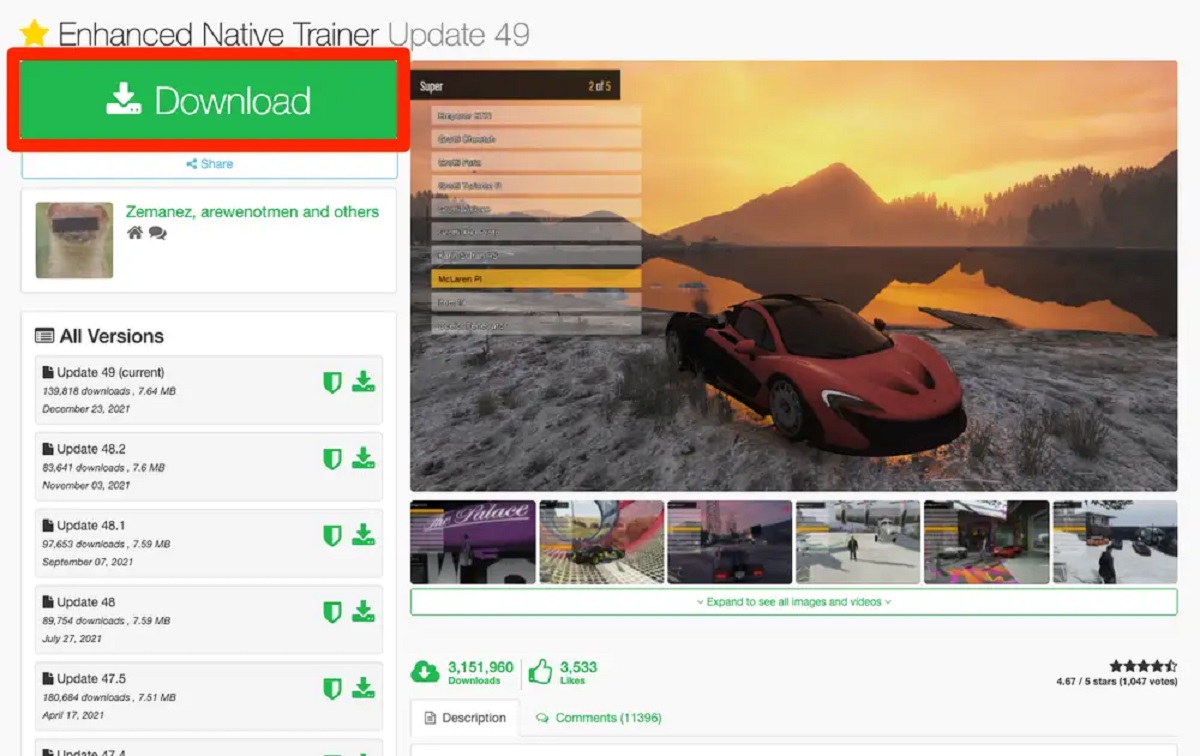Introduction
Welcome to the world of options trading! If you’re a seasoned trader or just starting out, you’ve likely come across the term “IV” or “Implied Volatility.” What exactly is IV, and why is it important in the options market?
IV, also known as Implied Volatility, is a measure of the market’s expectations for the potential price movement of an underlying asset. It reflects the anticipated level of volatility that market participants have factored into the pricing of options contracts.
Options trading offers traders the opportunity to gain exposure to a wide range of assets, including stocks, indices, commodities, and more. Unlike traditional stock trading, where traders speculate on the direction of the price, options trading provides a unique advantage by allowing traders to profit from the volatility of the underlying asset.
By understanding and effectively utilizing IV, options traders can make more informed decisions about which options contracts to buy or sell, and at what prices. It plays a critical role in determining the value and pricing of options, influencing both the premiums paid for options and the potential profitability of the trades.
As an options trader, it is crucial to have a solid grasp of IV and its implications. In this article, we will dive into the concept of IV, explain its importance in options trading, explore the factors that influence IV, and discuss strategies for trading based on IV levels.
So, if you’re ready to take your options trading to the next level, let’s begin our journey into the fascinating world of implied volatility.
What is IV?
Implied Volatility (IV) is a crucial concept in options trading. It is a measure of the market’s expectations for the potential price movement of an underlying asset, as implied by the pricing of options contracts. IV represents the anticipated level of volatility, or price fluctuations, that traders and investors have factored into the options’ premiums.
IV is an essential component in determining the value of an options contract. It is expressed as a percentage and can vary across different options and time frames. Higher IV implies a greater expected price movement in the underlying asset, while lower IV indicates a lower expected level of volatility.
It is important to note that IV is not the same as historical volatility, which is calculated based on the actual price movements of the underlying asset in the past. Instead, IV is derived from the prices of options contracts and reflects the market participants’ collective sentiment regarding the future price movements of the asset.
Options traders use IV as a tool to evaluate the relative attractiveness of different options contracts. Generally, higher IV results in higher options premiums, making the contracts more expensive to buy. Conversely, lower IV leads to lower options premiums, making the contracts cheaper.
Understanding IV is crucial for options traders as it provides insight into the market’s expectations for future price fluctuations. By assessing IV, traders can gauge the potential risk and reward of an options trade. High IV might indicate an opportunity for larger potential gains, but it also signifies higher uncertainty and risk. Conversely, low IV may indicate a more stable market environment but limited profit potential.
To better grasp the concept of IV, let’s consider an example. Suppose there is a stock trading at $100, and its options contracts have an IV of 30%. This means that the market is anticipating a potential price movement of around $30 (30% of $100) in either direction over a specific period.
It’s important to remember that IV is subjective and can change over time. It is influenced by various factors, such as market sentiment, economic news, earnings reports, and geopolitical events. Traders need to stay updated on these factors to make informed decisions based on the current IV levels.
In the next section, we will explore the importance of IV in options trading and how it affects both the pricing and profitability of options contracts.
Importance of IV in Options Trading
Implied Volatility (IV) plays a crucial role in options trading, impacting the pricing and profitability of options contracts. Understanding the importance of IV can help options traders make informed decisions and capitalize on market opportunities.
One of the primary reasons why IV is important is that it directly affects the premium of an options contract. The options premium represents the price that traders pay to buy an options contract or the amount they receive when selling one. IV is a significant determinant of the options premium and can significantly impact the cost of trading.
When IV is high, options premiums tend to be more expensive. This is because a higher IV indicates that the market expects greater price volatility in the underlying asset. Traders are willing to pay a higher premium to take advantage of potential larger price swings. On the other hand, when IV is low, options premiums tend to be cheaper, reflecting lower market expectations for price volatility.
Additionally, IV helps traders assess the potential profitability of an options trade. By analyzing the implied volatility of an options contract, traders can gauge the market’s expectations for future price movements. A higher IV suggests a greater chance of significant price swings, presenting opportunities for traders to profit from these anticipated moves.
Moreover, IV provides valuable information about market sentiment and uncertainty. When IV is high, it indicates that the market is pricing in more risk and uncertainty, reflecting a higher degree of fear or anticipation of market-moving events. Conversely, lower IV suggests a more stable market environment, with less expected price volatility.
Another important aspect of IV is its impact on different options strategies. Some options strategies, such as buying options, benefit from high IV as it increases the potential for substantial price movements. Conversely, other strategies, such as selling options, are more profitable when IV is low because it allows traders to collect higher premiums with lower expected price swings.
One must note that IV is not a predictor of future price movements but rather an indication of market participants’ expectations. However, by combining IV with other technical and fundamental analysis, traders can develop a more comprehensive view of the potential market trends and make informed trading decisions.
Ultimately, understanding and considering IV is crucial for options traders. By assessing IV levels, traders can make more informed decisions on which options contracts to trade, strategize their risk management, and potentially improve their overall trading performance.
In the next section, we will explore the factors that influence IV and contribute to its dynamic nature in options trading.
Factors Affecting IV
Implied Volatility (IV) in options trading is influenced by a variety of factors that contribute to its dynamic nature. Understanding these factors is essential for options traders to effectively interpret and utilize IV in their trading strategies.
1. Market Sentiment: Market sentiment can significantly impact IV levels. When there is fear or uncertainty in the market, traders often anticipate larger price swings, resulting in higher IV. Conversely, during periods of market stability or optimism, IV tends to be lower as there is less expected volatility.
2. Supply and Demand: The supply and demand for options contracts can affect IV. When there is a high demand for options, particularly for a specific underlying asset, the increased buying pressure can drive up IV. Conversely, when there is low demand, IV may decrease.
3. Economic Events: Important economic events, such as central bank decisions, economic data releases, or geopolitical events, can impact IV. Anticipated events with potential significant market implications often lead to higher IV as traders price in the potential volatility that may arise from these events.
4. Earnings Announcements: Earnings reports can significantly impact the stock prices of companies. Traders often anticipate increased volatility around earnings announcements, resulting in higher IV for the options of the underlying stocks.
5. Time to Expiration: As options contracts approach their expiration date, their IV tends to decrease. This phenomenon, known as IV crush, occurs because the uncertainty surrounding the future price movements diminishes as the expiration date draws nearer.
6. Underlying Asset’s Price: Changes in the price of the underlying asset can impact IV. Generally, when the price of the underlying asset experiences significant fluctuations, IV tends to increase as traders anticipate larger price movements.
7. Interest Rates: Changes in interest rates can influence IV. Higher interest rates can lead to higher IV as they may increase the cost of borrowing and impact the overall market sentiment.
It is essential to note that these factors do not act independently but rather interact and influence each other. Traders must consider multiple factors simultaneously to effectively interpret and utilize IV in their options trading strategies.
By understanding the various factors that affect IV, traders can gain insight into the market expectations and make informed decisions regarding which options contracts to trade and which strategies to employ.
In the next section, we will explore how IV is calculated and the different methods used by traders and market participants.
How to Calculate IV
Calculating Implied Volatility (IV) is a crucial aspect of options trading, as it helps traders determine the market’s expectations for future price volatility. While there are various methods and models to calculate IV, the two most commonly used approaches are the numerical method and the implied binomial tree method.
The numerical method, also known as the Newton-Raphson method, is widely used by traders and analysts to calculate IV. This method involves iterating through a series of calculations to find the IV that matches the observed market prices of options contracts. Traders input the current market price of the options, along with other known variables such as the strike price, time to expiration, current stock price, and interest rates, into the pricing model. The model then iteratively adjusts the IV until it converges on a value that matches the observed market prices.
The other commonly used method is the implied binomial tree method. This approach is based on building a binomial tree model to simulate the possible future price paths of the underlying asset. Traders input the current market prices of options contracts and other known variables into the model. The model uses a series of calculations to match the observed prices with the calculated prices based on different IV values. The IV that results in the closest match is considered the implied volatility.
It is important to note that both methods are complex and require sophisticated mathematical calculations. Traders often rely on options pricing software or platforms that have built-in IV calculators to simplify the process and provide accurate results.
Additionally, many financial websites and brokerage platforms offer IV data for individual options contracts, making it easier for traders to analyze and compare different options based on their implied volatilities.
While IV calculation methods provide valuable insights, it is crucial to understand that IV is an estimation and may not necessarily reflect the actual future volatility or price movements of the underlying asset. It represents the market’s expectations at a specific point in time and can change as new information becomes available.
Traders should also be aware that different calculation methods and models may yield slightly different IV values. Therefore, it is essential to use consistent and reliable sources for IV data and consider multiple factors when making options trading decisions.
In the next section, we will discuss how to interpret and utilize IV levels in options trading strategies.
Interpreting IV Levels
Interpreting Implied Volatility (IV) levels is crucial for options traders to make informed decisions and develop effective trading strategies. IV levels provide insight into market expectations for future price volatility and can influence the pricing and profitability of options contracts. Let’s explore how to interpret IV levels in options trading.
1. Low IV: When IV is low, it indicates that the market expects relatively smaller price movements in the underlying asset. This could be due to stable market conditions, lack of significant news or events, or overall market optimism. Low IV generally leads to cheaper options premiums, making these options contracts more attractive for strategies such as selling options or implementing income-generating strategies with limited risks.
2. High IV: High IV suggests that the market anticipates significant price volatility in the underlying asset. This could be due to upcoming news or events, uncertainties in the market, or increased investor anxiety. High IV leads to higher options premiums, often making options contracts more expensive to purchase. Traders may consider strategies such as buying options or implementing volatility-based strategies to take advantage of potential price swings.
3. Discrepancies in IV: Traders should also analyze the relationship between IV levels across different options contracts. If the IV of a specific options contract appears significantly different from the IV of other contracts with similar characteristics (e.g., same expiration date and strike price), it may indicate a potential trading opportunity. Traders can compare the relative IV levels to identify mispriced options and potentially capitalize on the discrepancies.
4. Historical IV vs. Implied Volatility: Comparing the current IV levels to the historical IV of an options contract can provide additional insights. If the implied volatility is significantly higher than historical volatility, it may indicate an overvalued options contract where the market participants have exaggerated expectations for future price movements. Conversely, if the implied volatility is lower than historical volatility, it may suggest an undervalued options contract where the market expectations for future volatility are relatively subdued.
5. IV Skew and IV Smile: IV skew refers to the asymmetrical distribution of IV across different strike prices. It may indicate the market’s bias towards either bullish or bearish sentiment. IV smile refers to the U-shaped curve of IV, with higher values for both out-of-the-money and in-the-money options. These patterns can provide valuable insights for options traders, helping them understand market dynamics and potential trading opportunities.
Interpreting IV levels requires a combination of analysis, market understanding, and experience. As IV is dynamic and influenced by various factors, it is essential for traders to consistently monitor IV levels, stay updated on market news and events, and adapt their options trading strategies accordingly.
In the final section, we will discuss some popular IV trading strategies that traders can consider incorporating into their options trading repertoire.
IV Trading Strategies
Implied Volatility (IV) can be a valuable tool for options traders to develop effective trading strategies. By understanding and utilizing IV levels, traders can capitalize on market expectations for future price volatility. Here are some popular IV trading strategies:
1. IV Expansion Strategy: This strategy involves buying options contracts when IV is expected to increase. Traders anticipate that higher IV will lead to a rise in options premiums, potentially resulting in profit from the increased value of the contracts. This strategy is often employed ahead of anticipated news or events that could cause a spike in volatility.
2. IV Compression Strategy: In contrast to the IV expansion strategy, this strategy involves selling options contracts when IV is expected to decrease. Traders aim to take advantage of the decreasing options premiums as IV decreases. This strategy is commonly employed when market conditions are expected to stabilize or during periods of low IV.
3. Long Straddle/Strangle: This strategy involves buying both a call option and a put option with the same expiration date and strike price, taking advantage of expected high IV and potential significant price movements. Traders profit if the underlying asset moves significantly in either direction, irrespective of the direction. This strategy is suitable for volatile market conditions or prior to major news announcements.
4. Iron Condor: The iron condor strategy is implemented when IV is expected to remain relatively low. It involves selling both a put spread and a call spread with limited risk and potential profitable outcomes if the price of the underlying asset remains within a specific range. The goal is to capture the premium earned by selling options contracts while managing the risk within the defined boundaries.
5. Calendar Spreads: In a calendar spread strategy, traders buy and sell options contracts with the same strike price but different expiration dates. This strategy aims to take advantage of changes in IV between the near-term and longer-term options contracts. By capitalizing on increasing IV in the short term and decreasing IV in the long term, traders can potentially profit from the difference in options premiums.
It is important to note that these strategies involve varying levels of risk and complexity. Traders should thoroughly understand the mechanics of each strategy and consider their risk tolerance and market analysis before implementing them.
Furthermore, IV trading strategies should be employed in conjunction with other technical and fundamental analysis, risk management techniques, and consideration of market conditions. Regular monitoring of IV levels and adjustments to strategies may be necessary as market dynamics change.
Incorporating IV into your options trading strategies can help enhance your decision-making process and potentially increase your chances of profitability. With proper analysis and understanding of IV, traders can take advantage of market expectations for future price volatility.
In this article, we explored the concept of IV, its importance in options trading, factors affecting IV, calculation methods, interpreting IV levels, and popular IV trading strategies. By utilizing these insights and applying them to your options trading, you can further refine your trading approach and potentially improve your trading outcomes.
Conclusion
Implied Volatility (IV) is a critical concept that options traders must understand to navigate the dynamic world of options trading effectively. It reflects the market’s expectations for future price volatility and plays an integral role in determining the pricing and profitability of options contracts.
Throughout this article, we have explored the definition of IV, its importance in options trading, the factors that influence it, methods for calculating IV, interpreting IV levels, and popular IV trading strategies.
By understanding IV and incorporating it into their trading strategies, options traders can gain valuable insights into market expectations and potential price movements. High IV may present opportunities for significant profit potential but also entails higher risk, while low IV may be more suitable for strategies focused on stable market conditions.
Traders should consider multiple factors, such as market sentiment, economic events, and the relationship between IV and historical volatility, when interpreting and utilizing IV levels. Continual monitoring of IV, staying updated on market news, and adapting trading strategies accordingly are crucial components of successful options trading.
It is important to remember that IV is dynamic and subject to change as market conditions evolve. IV is just one tool in the options trader’s arsenal, and it should be used in conjunction with other technical and fundamental analysis, risk management techniques, and consideration of overall market conditions.
By incorporating the knowledge and insights gained from understanding IV, options traders can make well-informed decisions, develop effective trading strategies, and potentially enhance their overall trading performance.
As you embark on your options trading journey, take the time to deepen your understanding of IV and its implications. Stay curious, continue to learn, and adapt your strategies to capitalize on the opportunities presented by changes in implied volatility and market conditions.
Now that you have a solid foundation in IV, go forth and explore the exciting world of options trading with confidence and creativity.
























